Midwifery
Inuit
Katie Paulot & Silvia Quintana-Diaz
Introduction
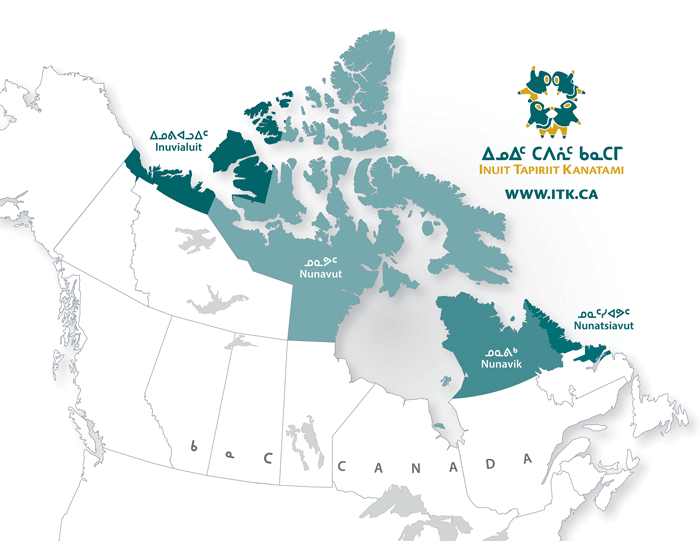
The Inuit are a group of Indigenous peoples that are located in the arctic regions of Canada. The Inuit inhabit what is called Nunangat which encompasses much of arctic Canada spanning from Alaska to Greenland ("About Canadian Inuit" n.d). The Inuit traditional way of life has been under attack ever since the introduction of Europeans (Pauktuutit Inuit Women of Canada 2006). One of these ways of life is the traditional birthing methods of the Inuit that utilize midwifery. These traditional methods refer to a midwifery system in which women give birth at home within the family group (Douglas 2006). The Canadian government started to intervene in the mid-1900s on the medical practices of the Inuit and began to force pregnant women to fly south to have their children in Canadian hospitals (Bronstein 2015). This forced removal of women from their home community during childbirth has had numerous negative effects on Inuit communities. These communities have begun actively resisting the Canadian government by establishing medical facilities of their own and keeping women in the Inuit community during childbirth.
History of Inuit Midwifery
The Inuit were a completely autonomous group of people in the arctic regions of present-day Canada. Their communities consisted of small nomadic groups of hunters that relied on caribou, fish, sea mammals, and the occasional gathering of berries (Pauktuutit Inuit Women of Canada 2006). Traditional Inuit culture relied on a form of customary law based on social pressure conducted through the community and elders. The laws practiced were based on culturally specific values and beliefs.
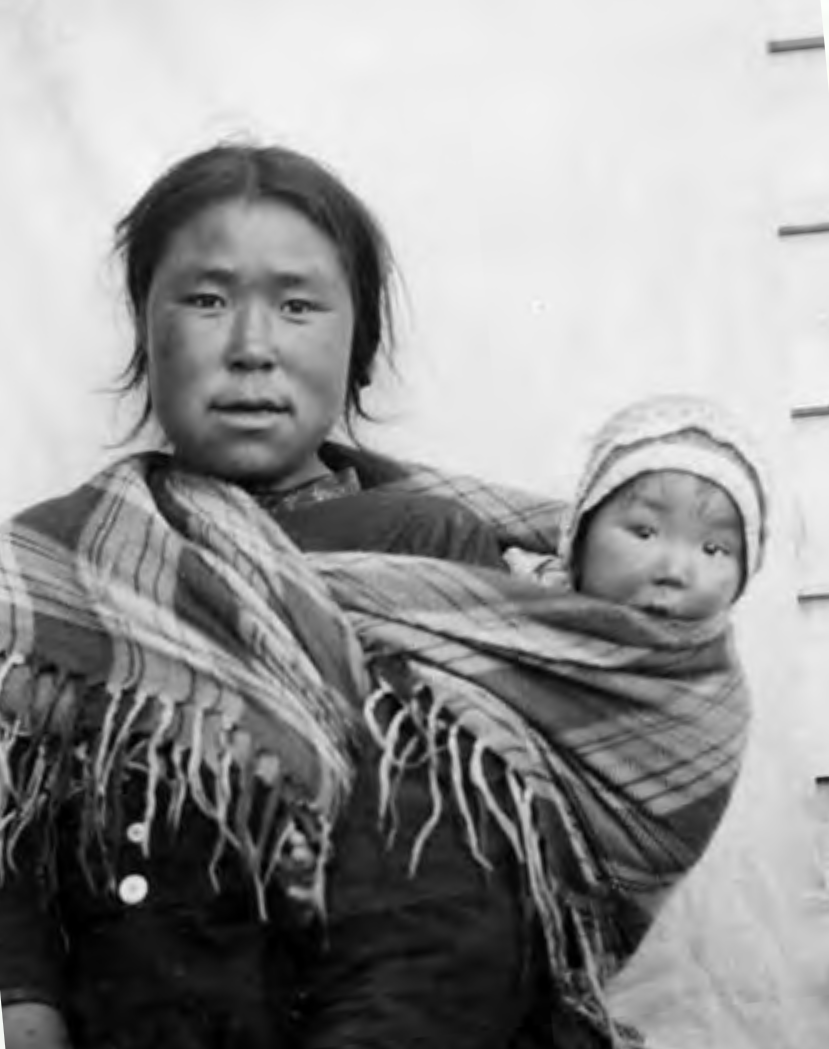
The introduction of Europeans to the arctic regions of Canada changed the Inuit culture dramatically as the fur trade infiltrated the Inuit autonomous economic structure. Inuit people became more reliant on the products Europeans brought to trade with, and they became necessities in the newly transformed Inuit culture (Pauktuutit Inuit Women of Canada 2006). The intervention of the settler-colonial government of Canada also had a lasting effect on Inuit culture as their families were torn apart through mandatory residential schooling for Inuit children and customary law was replaced with the Royal Canadian Mountain Police (Pauktuutit Inuit Women of Canada 2006).
Increasing intervention by the Canadian government has impacted the Inuit in several ways. One of the major interventions on Inuit culture, made by the Canadian government, involved the traditional birthing methods of the Inuit. Traditional birthing methods varied across Inuit communities but consisted of a midwife system. Inuit childbirth “embodied an ethic of self-sufficiency or a belief in the mother’s active role in achieving a good outcome,” (Bronstein 2015 pg.26). Starting in the 19th century, European missionaries began providing healthcare but the main intervention came from the government (Bronstein 2015). In 1904, Dr. Peter Bryce, Chief Medical Officer of the Department of Indian Affairs, claimed that high rates of infection for children at birth were due to Indigneous birthing rituals (Bronstein 2015).
This led the Canadian government to feel that action needed to be taken to save Inuit babies and mothers. With the increase of biomedicalization in the first half of the 20th century, more interventions such as nurse visitors and Canadian established nursing stations appeared in Inuit communities.
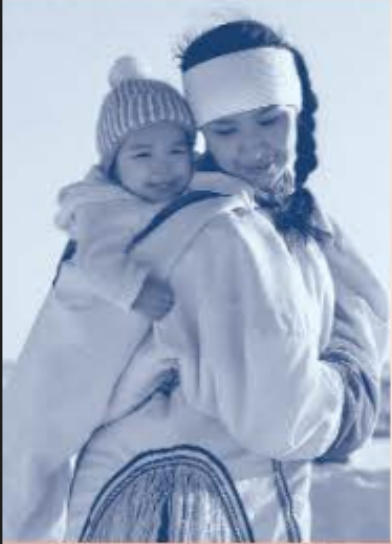
The Canadian government moved to evacuate pregnant women from the arctic region to southern hospitals to give birth as their nursing stations were ill staffed, and they saw Canadian biomedicine as the only viable way to deal with IMR. By 1980, 98% of Inuit pregnant women were forced to hospitals in southern Canada to give birth (Bronstein 2015). This practice completely demolished the cultural practices of community birth by midwives and families. It was also expensive and many of the Inuit women were unable to converse effectively with southern healthcare workers (Bronstein 2015). By sending women south, it obilerated their culture and autonomy and often created additional problems such as social dislocation, poor diet, family stress, child neglect, and rising substance abuse among Inuit communities (Van Wagner et. al 2007).
Present Day: Resistance and Reclaiming of Inuit Midwifery
Rather than creating a solution, the Canadian government created more complications for the Inuit community. Interesting enough, “[r]esults of studies throughout the 1970s showed that it was actually safer [for infants] to be born in Inuit communities ….” (Baskett, 1978, p. 1004) . Inuit women are subject[ed] to the social determinants of systemic racism, evident in health care that is not culturally appropriate and that fails to provide relevant services in accessible languages, socioeconomic status which compounds the economic costs and stress of evacuation, and gendered norms which subject them to the patriarchal authority of the medical profession and double duties of working and providing domestic and childcare labour (NAHO, 2006, p. 15). Innuit people have worked to reclaim their traditional birthing methods in order to dismantle negative effects and in doing so they worked towards decolonizing Inuit births.
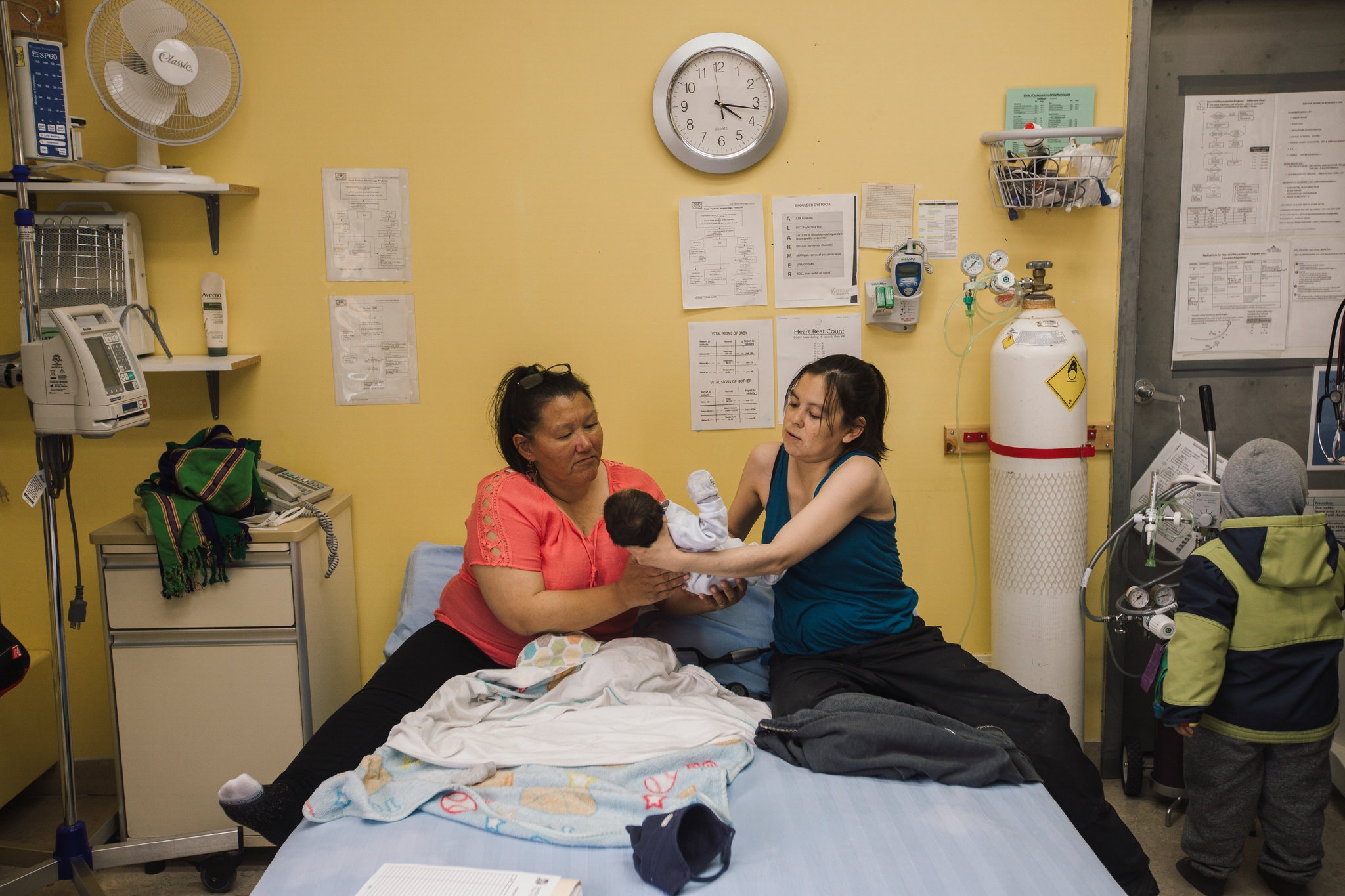
Programs like the Inuulitsivik Maternities in Nunavik, QC and the Rankin Inlet Birthing Centre in Rankin Inlet, NU, have paved the way in recruiting Inuit women and incorporating Inuit knowledge on childbirth. If we take a closer look at one of the community-based programs, Inuulitsivik Maternities, opened their doors in September 1986. Infant mortality rates have fallen from 8.6% to 3.6% as of 2006, and several thousand births have safely occurred at the Maternities since 1986 (Kileda, 2006, p. 392). There are fewer premature and low birth weight deliveries reported, with rates of complications and birth interventions decreasing significantly when “the majority of births began occurring at the Maternities instead of in Southern hospitals” (Douglas, 2006, p. 127; Houd, Qinuajuak, & Epoo, 2004, p. 239).
This was due to an extensive amount of work by conducting public surveys, dialogues, and consulting Inuit communities, specifically, involving elders. Elders feared losing important traditional practices because of the inability to pass them down. However, becoming actively involved in helping Maternities in reviewing taboos, traditions, and childbirth practices created a system that is entirely medicalized, yet, Inuit. The Innulisivik Maternities “[operated] as a “midwifery-led collaborative model of care” using midwives, nurses, and physicians as a multi-disciplinary team” (NACM, n.d., p. 7).
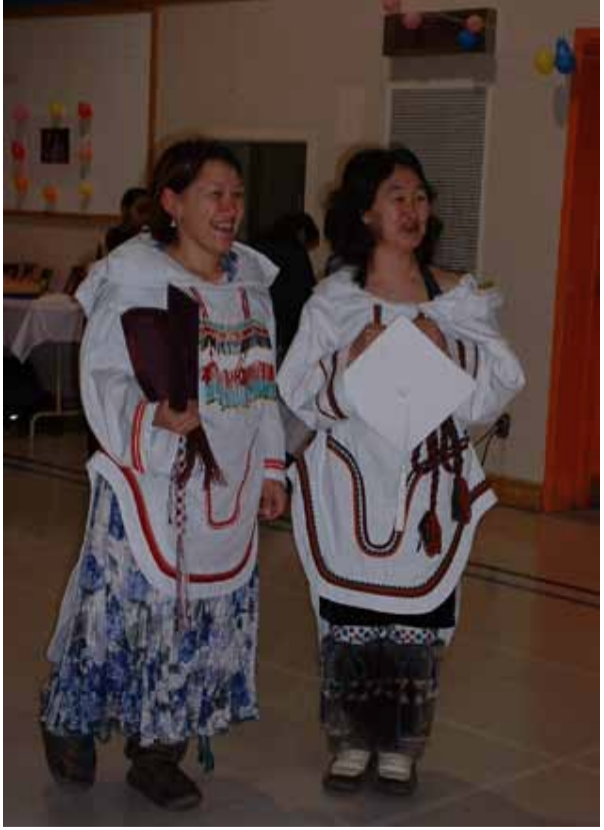
The Midwifery Education Program uses a modular competency based curriculum, consistent with that of southern midwifery education programs but adapted to the realities of northern practice (NAHO, 2008, p. 33). Classroom education, hands-on apprenticeship training, and a mentor/mentee system between students and the Maternities’ midwives form the backbone of this program (Daviss, 1997, p. 451; 462). As mentioned before, students work with elders in different communities to learn about their storytelling and oral methods of teaching, creating a learning environment where they can take these teachings to advocate for those who live in remote areas and face language barriers. This in return creates a safe environment for patients who feel that they can interact with health care services in a healthy way. There is an understanding that learning takes place not only in a clinical or academic setting, but rather is a holistic experience encompassing the home, community, and land (Epoo et al., 2012, p. 288).
However, there are limitations within every program. Inuit women face institutionalized racism in the Canadian health care system, and particularly in the evacuation based model which removes them from their communities [when complications with the fetus occur while] the birth event which must take place in southern hospitals under the care of southern health care workers (Galabuzi, 2004). Not every model is well equipped for every case scenario nor do they easily apply to every community's needs. As mentioned before these programs are not fully western medicalized and not fully Inuit. This can create limitations, like not adequately supporting Inuit midwives or acknowledging their knowledge within these practices. Stress, unfamiliarity, language barrier, and lack of cultural respect engagement with pregnant Inuit women can lead to a traumatic experience for these women. These programs can work to further failure in adequately addressing the historical trauma and colonial roots of evacuation, in that a majority of women with complications are still evacuated under this model (Gref 2018) . In order to successfully provide effective services, Canadian programs must consider and respect “cultural traditions, knowledge, and beliefs as well as the importance of community participation in the decision-making and implementation processes” (Lalonde, Butt, & Bucio, 2009, p. 956).
Further Reading and Resources
Pauktuutit Inuit Women of Canada
Non-profit organization by and for Inuit women in Canada. Their website has information on violence and abuse prevention, health, and social and economic development. The organization was established in 1970.
Nutaraqtaariavittuq - Expecting the Child
Documentary about home birth in Nunavik in 2005.
Changing Women Initiative
Non-profit organization devoted to Indigenous midwifery.
National Aboriginal Council of Midwives
Established in 2002, this organization that advocates for midwifery education, and midwifery services. They are a part of the Canadian Association of Midwives.This organization has put out information about essential care and midwifery amid COVID-19 that can be found here.Inuulitsivik Health Centre
Official website of the health center that was established by and for Inuit people in 1986.
References
Pictures
Bracken, A. (2020). Susie Mina, right, passing her son Max to Brenda Epoo, a midwife, during a visit to the Inukjuak clinic. [Photograph]. The New York Times."https://www.nytimes.com/2020/01/05/world/canada/nunavik-midwives-indigenous.html"
Burwash, L. T. (1927). [Inuit woman and child.] [Photograph]. Library and Archives of Canada. https://www.bac-lac.gc.ca/eng/CollectionSearch/Pages/record.aspx?app=fonandcol&IdNumber=3607112&new=-8586152431357561992"
Hauser, V. T. (1984). [No title- image is of an Inuit woman with child strapped on her back in black and white]. [Photograph]. “Born on the Land with Helping Hands: The Inuit Guide to a Healthy Pregnancy” Pauktuutit Inuit Women of Canada.https://www.pauktuutit.ca/health/maternal-health"
Figure 2. Image of two Inuit women graduating from midwifery program. Adapted from “Learning Midwifery in Nunavik: Community-based Education for Inuit Midwives” by Epoo, B., Stonier, J., Van Wagner, V. and Harney, E. A Journal of Aboriginal and Indigenous Community Health 10(3) 2012, 287.
Inuit Tapirkit Kanatami. (n.d.) [Map of the Nunavut and Nunavik regions] [Photograph]. “Inuit Nunangat” Indigenous Peoples Atlas of Canada.
"https://indigenouspeoplesatlasofcanada.ca/article/inuit-nunangat/"Literature
“About Canadian Inuit.” (n.d.). Inuit Tapirkit Kanatami. Retrieved April 8, 2020 Retrieved from "https://www.itk.ca/about-canadian-inuit/"
Bronstein, T. (2015). “Bringing Birth Home: An Analysis of Inuit Birthing Practices and Policies.” McGill Journal of Global Health (the Prognosis) 26-33. https://theprognosismcgill.com/2015/04/04/bringing-birth-home-an-analysis-of-inuit-birthing-practices-and-policies/"
Baskett, T. F. (1978). Obstetric care in the central Canadian Arctic. British Medical Journal, 2(61), 1001-1004. Retrieved from https://www.ncbi.nlm.nih.gov/pmc/articles/PMC1607878/pdf/brmedj00147-0031.pdf"
Douglas, V. (2006) “Childbirth among the Canadian Inuit: A review of the clinical and cultural literature.” International Journal of Circumpolar Health 65(2), 117-132. https://doi.org/10.3402/ijch.v65i2.18087"
Daviss, B. A. (1997). Heeding Warnings from the Canary, the Whale, and the Inuit: A Framework for Analyzing Competing Types of Knowledge about Childbirth. In R E. Davis-Floyd & C. F. Sargent (Eds.), Childbirth and Authoritative Knowledge: Cross- Cultural Perspectives (pp. 315-349). Berkeley: University of California Press. Retrived from https://dalspace.library.dal.ca/bitstream/handle/10222/74142/Gref-Katharina-MA-INTD-August-2018.pdf?sequence=1&isAllowed=y"
Epoo, B., Stonier, J., Wagner, V. V., & Harney, E. (2012). Learning Midwifery in Nunavik: Community-based Education. A Journal of Aboriginal and Indigenous Community Health 10(3) 2012, 283-300. Retrieved from https://journalindigenouswellbeing.com/wp-content/uploads/2013/02/03EpooStonier.pdf"
Gref, K. (2018). Decolonizing Childbirth: Inuit Midwifery And The Return Of Delivery To The Canadian North. Dalhousie University Halifax, Nova Scotia. Retrieved from https://dalspace.library.dal.ca/bitstream/handle/10222/74142/Gref-Katharina-MA-INTD-August-2018.pdf?sequence=1&isAllowed="
Houd, S., Qinuajuak , J., & Epoo, B. (2004). The outcome of perinatal care in Inukjuak, Nunavik, Canada 1998–2002. International Journal of Circumpolar Health, 63(2), 239-241. Retrieved from https://www.tandfonline.com/doi/pdf/10.3402/ijch.v63i0.17909?needAccess=true"
Kileda, S. (2006). Risky business: contested knowledge over safe birthing services for Aboriginal women. Health Sociology Review, 15(4), 387-396.
Lalonde, A. B., Butt, C., & Bucio, A. (2009). Maternal Health in Canadian Aboriginal Communities: Challenges and Opportunities. Journal of Obstetrics and Gynaecology Canada, 31(10), 956-962. Retrieved from https://www.jogc.com/article/S1701-2163(16)34325-0/fulltext
National Aboriginal Health Organization. (2008). Celebrating Birth: Aboriginal Midwifery in Canada. Retrieved from https://www.saintelizabeth.com/getmedia/5b080031-a443-4d71-8a64-2dc429b4d34f/Celebrating_Birth_Aboriginal_Midwifery_Canada_2008.pdf.aspx"
National Aboriginal Council of Midwives. (n.d.). Restoration and Renewal: Aboriginal Midwifery in Canada. Retrieved from https://indigenousmidwifery.ca/wp-content/uploads/2018/10/Restoration-and-Renewal.pdf"
Pauktuutit Inuit Women of Canada. (2006). The Inuit Way: A Guide to Inuit Culture. https://www.relations-inuit.chaire.ulaval.ca/sites/relations-inuit.chaire.ulaval.ca/files/InuitWay_e.pdf"
Van Wagner, V., Epoo, B.R.M., Nastapoka, J., & Harney, E. (2007). “Reclaiming Birth, Health, and Community: Midwifery in the Inuit Villages of Nunavik, Canada.” American College of Nurse-Midwives 52(4), 384-391. doi:10.1016/j.jmwh.2007.03.025."